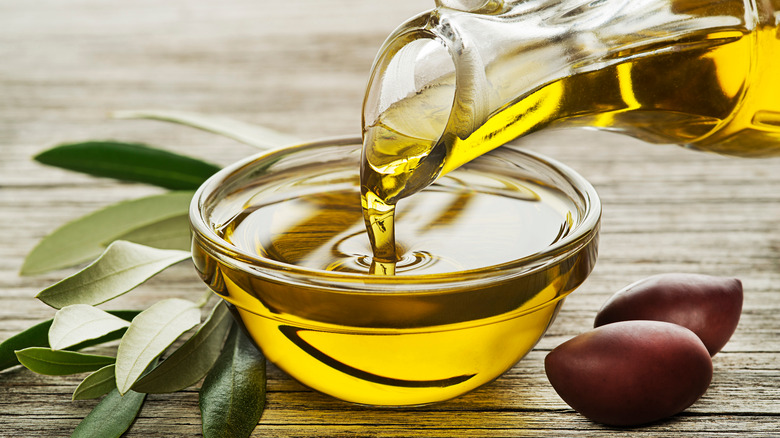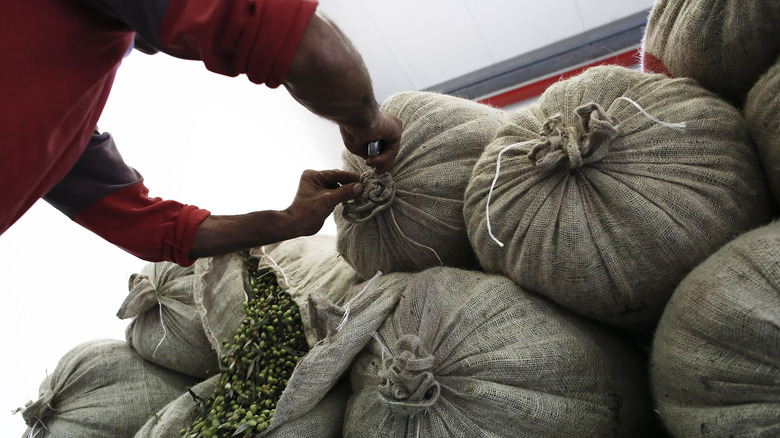The Real Reasons Olive Oil Is So Expensive
If you do any sort of cooking, you've probably run across recipes that call for olive oil. It's a great substitute for butter in some dishes, and it's one of the healthiest oils you can cook with. Harvard Health Publishing notes that it has antioxidant and anti-inflammatory attributes, as well as plenty of monounsaturated fatty acids, which can help lower "bad" cholesterol.
You won't have any trouble finding olive oil at the store. Supermarkets, specialty food shops and online vendors have many varieties to choose from, some of which are relatively affordable and some that can get quite expensive. In a testing of 100 extra-virgin olive oils from around the globe, Epicurious's favorite budget-friendly variety cost $13 while its top high-end choice was selling for $40.
Then there are truly extravagant olive oils. When My Affordable Luxury Magazine compiled a list of the world's 13 most expensive olive oils, three cost more than $100 per bottle. The most expensive, from Greece, contains flakes of gold and will set you back $729. The runner up costs $196 and is produced in a 14th-century Italian monastery "with an old-school press."
Flakes of gold and ancient methods aside, there are some less esoteric reasons why olive oil tends to be on the pricier side.
Olive oil's pricey farm-to-table journey
Most olive oil is produced in Spain, Greece, Italy, Turkey, Tunisia, and Morocco and has to be imported from those nations, which means fees, middlemen, taxes, and grocery store markups jack up the price after it's shipped, according to Foodiosity.
For truly top-shelf olive oil, considerations include when the olives are picked and processed and the time between those steps, as well as humidity and oxygen levels, the shape of the tree, and the temperature during processing. "The most exclusive brands process at lower temperatures," My Affordable Luxury says. "That's why you should always go for oils labeled cold press or first press."
It takes nine to 11 kilograms of olive fruit — which is the yield of more than one tree — to produce one kilogram of cold pressed olive oil, according to Foodiosity. Further, all those fresh olives that get turned into a pulp, meaning the farmer can't sell them whole.
Plus, olives are more difficult to harvest than other types of crops. Foodiosity says most olives are harvested by hand because the trees grow on rocky hillsides that prohibit machinery. When it comes to processing, low-cost factories make even extra-virgin olive oil from a mix of different types of olives that can vary in ripeness. Processors that use just one type of fruit picked at the height of ripeness can offer higher quality, but it comes at a greater cost.

